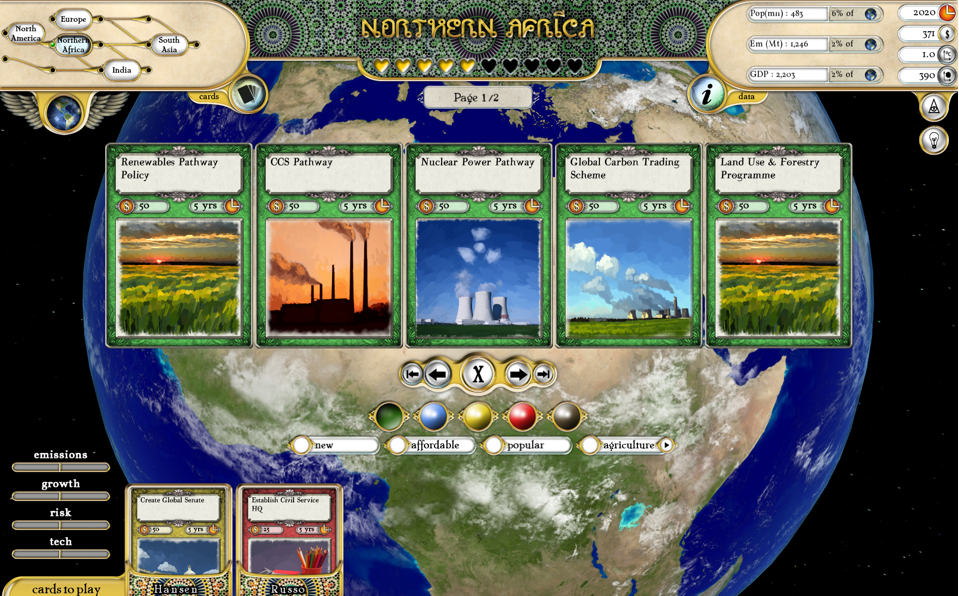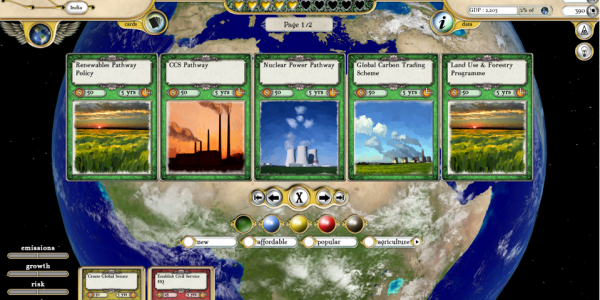Simulation games always seem like a simple proposition. They let us control a habitat in any fashion we choose. In exchange, we give up interaction. You’re an overlord. You tilt and influence, but you never ARE the people in the games. It’s not an interdependent relationship; you just direct the events around them. And when you play games like that for so long, you start considering the idea of the game in the realm of actual life. You have to. You have to come back to reality at some point.
For example, Roller Coaster Tycoon was my creed as a kid. So it’d be ungrateful to say all I got from playing that game religiously was “Man, Six Flags could use more balloon stands. THEY MAKE KIDS SO HAPPY!” Just like it’d be untrue if I said all The Sims taught me was poor buying habits. Games like this, like SimCity, push for something more. They make us answer questions about ourselves. If we had the tools to build and create, how would we do it? If we could play God, how would we craft our little ecosystems?
This is the question Fate of the World: Tipping Point presents, albeit from the 400,000 foot view. The world has been laid in front of the player, and it’s not doing so well. The Earth is in paralyzing disarray thanks to escalating environmental concerns. Polar icecaps are melting. Ocean tides are on the rise. Something called a Hypercane ravages parts of Asia. In the wake of this, the world unites behind the Global Environmental Organization (GEO). As its new CEO, effectively immediately, you must save the world.
Spectacular premise aside, Fate of the World‘s gameplay is pretty uneventful. You’ll DO plenty, but you really won’t play. You’ll work. To start, a three dimensional model of the Earth is yours for the spinning. Various menus are splayed across the screen, granting access to charts, graphs and news reports regarding each nation. Recruiters of the GEO are dispersed in each area of the world. Essentially, the recruits are just a way of humanizing the games dated, unenthusiastic card system. 1 recruit = 1 card to be played for that nation.

The cards are used to solve problems conveyed through the news reports for each nation. Environmental cards solve irrigation problems, farming issues and the like. Political cards stifle any resistance groups that emerge. And so on. With a game this vast, creating a simple system of play is necessary. But ending up with something that feels so uninspired and lethargic is just a shame. Eventually, it devolves into a matching game. “Which card will solve a top soil issue is North Africa?” Only one way to find out…
After you choose your card, you hit the go button and watch several years jump past in a few seconds. Emission and population stats rise and fall with each pass and the game gives you updates on what nations are doing well and which are not. Check the news reports one more time, see which nations are crumbling and play some more cards
The challenge comes from costs. Your funds are limited and cards are expensive, as are recruits. So choosing which issues to deal with first is where the strategy comes in. You can also use the Stat Telemetry menu to collect/study information. The menu gives you an ornate amount of data such as emission statistics, HDI readings, resource consumption, climate impacts, and so on. This labyrinth of data is meant to show you how the cards you play influence global trends, displaying graphs for each set of data. Unfortunately, even with constant checking, I found little use for them. Most would just escalate regardless of my actions.
Having so much data becomes overwhelming. The developers seemed to know that going in, as they provided an in-game encyclopedia for reference. If players should have questions about what “El Nino” or “TckTckTck” is, this list of Earth science vocabulary words will provide the answers. Fate of the World is meant for the studious, because only those with the patience to explore the game’s seemingly endless stream of data will be able to apply it effectively.
There are several different missions when you start with scenarios and goals to complete, which is quite a challenge. It may seem simple to “Reach the year 2XXX” at first, but with end of each turn comes another heap of problems. I must have played the first mission a handful of times and was never able to meet the single, primary objective.
Hell, there’s even one mission where your goal is to destroy the world. I thought, “Perfect, something I’ve been doing effortlessly from the start, despite my best efforts. This should be easy.” Nope. I couldn’t even win when my goal was to screw things up.
Fate of the World: Tipping Point urges players to think politically, economically, globally. Its underlying theme of green awareness doesn’t blare loudly into the megaphone, thankfully. Taking the helm as world leader can only be so interesting when your overlordiness is spent from the heavens. As I said before, these types of games are often focused on a lonely construct. Fate of the World‘s zoomed out view only amplifies it. There are no cities to build and govern the way you’d like. No households to furnish or families to uniquely mold. No amusement parks to imagine and take for a ride. There’s just the Earth and your deck of cards.


















